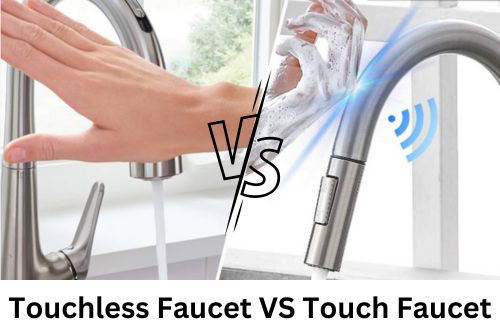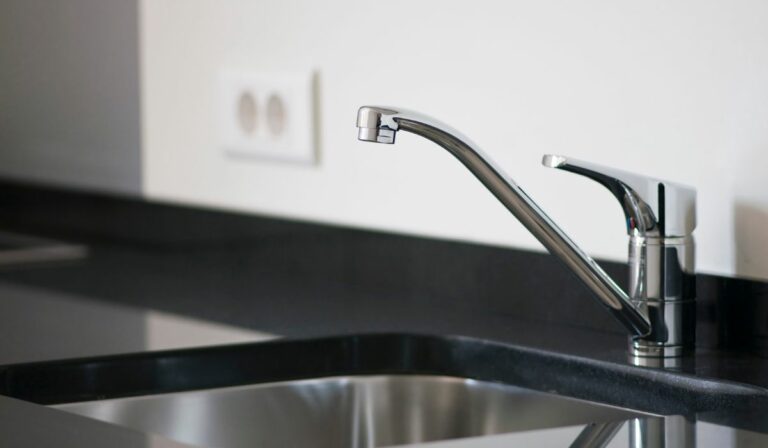Are Touchless Faucets Worth It for Your Home?
The pandemic was not too long ago. And the hype of going touchless is still pretty much evident. This could be one reason that touchless faucets are lately so popular. While visiting people expect to find at least one touchless faucet at any public premise.
This tells a lot about the demand! But are touchless faucets worth it at home for the price?
Touchless faucets can be worth it for so many great advantages it accompanies. These make cleaning convenient and easy, allow more hygiene into the space, and add sophistication to the overall sink look.
But some drawbacks need your attention. Only then you will be truly able to decide the hype and worth for yourself. Let’s Get Started On That!
Touchless Faucets Are Worth It for Several Reasons
To understand the true benefits, you also need to know exactly how a touchless kitchen faucet works.

The touchless kitchen faucet works through sensors to detect the presence of a hand beneath the spout and then turn the water on. These faucets also turn off the water as soon as the hands are out of the range. This makes the faucet automatic without needing any touch or press of a button. So, you save water without any extra effort.
Touchless faucets use a power source that can vary depending on the model and brand. Some will use dry-cell batteries. While other touchless faucets may need electricity to run.
Covid has already made it quite obvious why the benefits of upgrading to a touchless faucet are significant.
Pros of Using a Touchless Faucet
Here are the most promising benefits of touchless faucets that you should know about:
Cut Down On Water Usage
With a touchless bathroom faucet or kitchen faucet you can actually cut down the overall usage of water. Most modern designs will come with low-flow heads.
So that the quantity of water used is low. But you don’t get any less of an experience. This can particularly help households where kids often leave the water running.
More Hygenic
Raw food contamination is a real thing when cutting meats and fish. Unlike with a standard sink, you don’t have to use your hands that have touched the raw food to turn the touchless faucet on.
You don’t have to take the extra load of disinfecting the tap after dealing with the strenuous job of cutting meat.
Less Grease Buildup
There will be less grease buildup compared to standard faucets as you won’t be using oily hands to turn it on. This will make cleaning the faucet and sink easier.
Visual Aspect
The elegance that a touchless faucet can add to a kitchen space is no joke. You can browse from a wide range of designs that these touch-free systems come for nowadays.
Cons of Using a Touchless Faucet
There are some problems with touchless faucets that you may need to deal with too. These are something you should know if you are also willing to compare touchless faucets vs. traditional faucets.
So, what are the cons of having a touchless faucet?
Well, the most common con of having a touchless faucet is its durability. In terms of longevity, these faucets are often not the best choice.
Exactly how long do touchless faucets last? Actually, that’s not something you can specify.
However, a touchless faucet should last you somewhere between 2 to 5 years. A clogged pilot valve, problematic power source, and many other issues may start to develop sooner than you’d like them to.
However, some models are made with premium materials and technology. But then again those are usually quite expensive faucets to try.
Just Look at the Price Difference Between Standard and Touchless Faucets from Different Brands:
- A touchless faucet from Moen is almost double the price of a standard faucet model from the brand.
- Delta sells touchless faucets for around 1.5 times more than the price of their standard faucets.
- Kohler touchless faucets are also 1.5 times pricier than the brand’s regular faucet models.
It’s also true the additional price is a given as the touch-free systems use sensors and mechanisms that regular faucets don’t need. However, not everyone has that type of budget.
These Are Some Other Disadvantages of Touchless Faucets You Should be Aware of:
How Well Touchless Faucets Perform Against Touch on Faucets?
The world of faucets with touch technology is not limited to just the touch-free systems out there. There are also touch-on faucets.

What is the difference between a touchless faucet and a touch-on faucet?
The main difference between a touchless faucet and a touch-on faucet is the way it turns on/off. In the case of a touch faucet, you will need to go just a step further by giving a single tap, While with a touchless faucet, it simply needs a wave or swipe on the sensor.
Depending on your preference, you can go for a touch or touchless kitchen faucet. If you want a little more control over how to turn the faucet on, you can go for a touch faucet or otherwise the touchless one.
That’s not often a confusion you can’t sort out. But it may be tricky to determine if the touch technology is worth it for the faucet.
Touch technology is worth it for users who want to experience an on-demand water supply without any mess and don’t mind the expense. It’s modern, makes washing easier, and helps in many other ways.
How Do You Know If Touchless Faucet Is for You?
By now, you should have a sense of whether or not a touchless faucet is a good option for your household. However, let me share a few pointers that shall help you decide more firmly.
You May Need a Touchless Faucet If:
You’ll agree that touchless faucets can provide numerous benefits, including convenience, hygiene, and water conservation. However, it’s important to also consider the impact of the quality of the faucet on the health of your home and your family.
In my opinion, the advantages of touchless faucets are good enough to overshadow their minor drawbacks. Especially if you do have the budget to afford one of these. Because the price point is where I feel like most would want to give up.
Wrapping Up
And that was some idea on the most likely pros and cons of touchless kitchen faucets. So, are touchless faucets worth it for the benefits, and are the drawbacks ignorable?
Well, it really varies from person to person.
It’s quite true that someone who has started to use these faucets will hardly want to go back. However, this does not mean you cannot live without touchless technology. Plenty of great traditional faucets do the job, are good-looking, and provide enough convenience.
I just wanted to explain what good and bad will be part of your journey when getting a touchless faucet. Ultimately, the final decision is really up to your lifestyle and preference.

